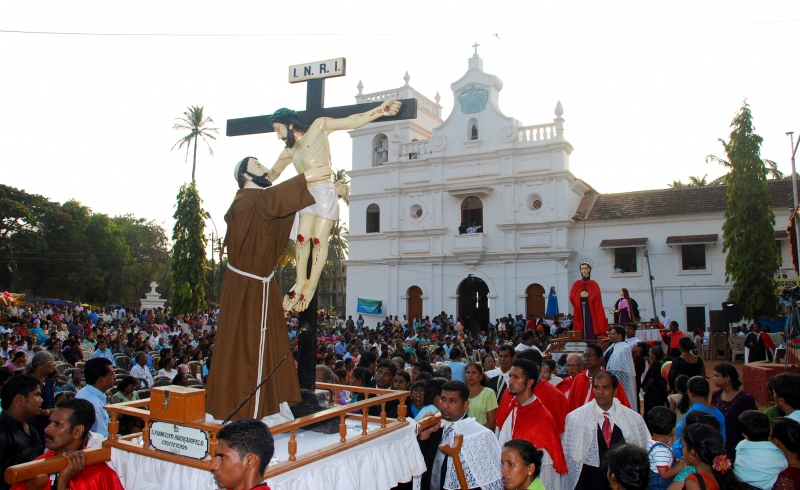The Feast of All Saints celebrated in the Roman Catholic Church on November 1 is a day to commemorate the Saints. All Saints Day annually reminds us of our connectedness with them as Christians

The exact origin of the celebration of feast on November1 is uncertain since it was celebrated on different days in different areas.The Eastern Churches celebrated it on May 13, the Syrian on Friday after Easterand the city of Antioch including the West on the first Sunday after Pentecost.
A common commemoration of the saints, especially martyrs,appeared in various areas throughout the Church, after the legalisation ofChristianity in 313. The primary reason for having one celebration was becauseof the desire to honour those Christians, who were martyred during the rule ofthe Roman Empire. There were so many martyrs that a feast day for each or agroup of martyrs in the calendar year, was insufficient, hence it was felt mostappropriate to have a common feast for all saints.
In 609, the Emperor Phocas gave the Pantheon in Rome toPope Boniface IV, who re-dedicated it on May 13 under the title St Maria adMartyres (St Mary and All Martyrs).
In the next century, Pope Gregory III (731-741),dedicated an Oratory in the original St. Peter’s Basilica in honour of All theSaints on November 1 and this date became the official date to celebrate theFeast of All Saints in Rome. Pope Gregory IV then universalised it in thechurch. This date has now remained as the All Saints Day.
THE GOAN CONNECTION
Catholics in Goa have traditionally had a closeconnection with saints. Many Churches in Goa are dedicated to the Saints, suchas the Velim Church (St Francis Xavier), Siolim Church (St Anthony), Old GoaCathedral (St Catherine of Siena), Velha Goa Church (St Francis of Assisi),Telaulim Church (St Anne) and so on.
In the days of old, when the parents wanted to name theirchildren, their first choice would be the name of the saint of the day andother names would be added to it, like the grandparents name and so on.
They would choose the saint’s name for his or herprotection and hoped that the child would imbibe the saint’s qualities. Thoughthe scenario may not be the same today, parents still prefer to have the secondname of the child, that of a saint.
In times of need, Goans normally pray to the patronSaint. St Anthony of Padua can be said to be the one most in demand. The saintis sought for by bachelors/spinsters for a suitable life partner, when therains are delayed and so too when any article is lost and he never lets adevotee down.
In the days of old, most houses were dedicated to aparticular saint and the statue of the same would be kept in the Oratory of thehouse. When the ladain (litany) was said in the house on any particularoccasion, the hymn of the saint would always be sung. Besides the house patronsaint, there would also be images of other saints.
In Goa, there is the famous ‘Santachem Pursanv’,(Procession of Saints) started by Franciscan priests in the 17th century, heldon fifth Monday of Lent in Goa Velha, where life-sized statues of Saints aretaken in procession in and around the village. This event attracts crowds fromall over Goa, irrespective of creed, to strengthen their faith and ask fortheir intercession.
On the feast of all Saints, Catholics become aware oftheir close relationship with them and celebrate their feast with all solemnity.The feast also becomes an occasion for family reunion and in strengtheningbonds between the villagers and the Church.